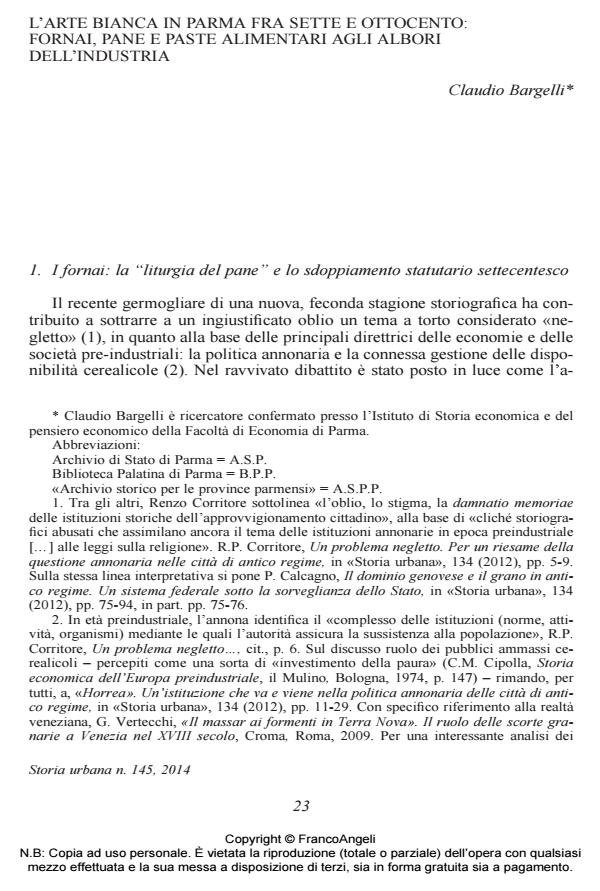«White art» in Parma between XVIIIth and XIXth century. Makers, bread and Italian pastas at dawn of industry Parmesan States. Italy XVIII-XIXth centuries Urban food supply systems Bakers and Italian pasta makers.
Journal title STORIA URBANA
Author/s Claudio Bargelli
Publishing Year 2015 Issue 2014/145
Language Italian Pages 28 P. 23-50 File size 248 KB
DOI 10.3280/SU2015-145002
DOI is like a bar code for intellectual property: to have more infomation
click here
Below, you can see the article first page
If you want to buy this article in PDF format, you can do it, following the instructions to buy download credits

FrancoAngeli is member of Publishers International Linking Association, Inc (PILA), a not-for-profit association which run the CrossRef service enabling links to and from online scholarly content.
Analysed case-by-case in its institutional aspects and in its technical and administrative mechanisms, the study of the bakery sector allows to penetrate - in a fruitful comparative perspective - the complex subject of food supply of the towns of the ancien régime, illuminating the wide variety of government decisions related to the provisions. Since the Middle Ages, bakery winds in the wake of binding provisions and pre-distribution channels and coincides with the final phase of the production process that is embodied in the creation of the desired final product: the bread. In July 1768 the French Minister Du Tillot grants the Ligurian entrepreneurs Stefano Lucciardi a ten-year monopoly (ius privativo) for the manufacture of "venal pasta for the use of Genoa": it is the first important impetus to the spread of the emerging branch production in the Parma area. After a long period in which pasta makers were subordinated to bakers - that makes the case here analyzed quite distinguishing and deserving of further studies -, only in the post-unification period it is possible to see the emergence of modern organized pasta factories according to the factory system. This process launched the journey that, several decades later, will arrive at the bright scenery of the famous Food Valley.
Claudio Bargelli, L’arte bianca in parma fra Sette e Ottocento: fornai, pane e paste alimentari agli albori dell’industria in "STORIA URBANA " 145/2014, pp 23-50, DOI: 10.3280/SU2015-145002